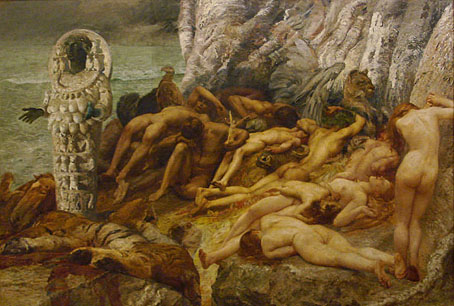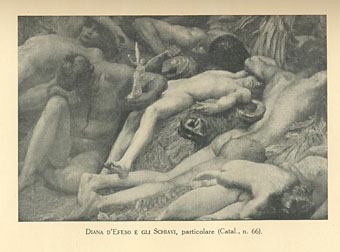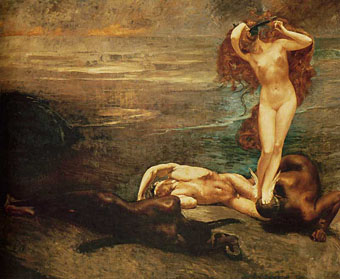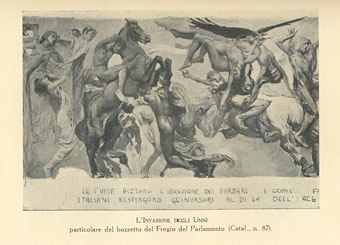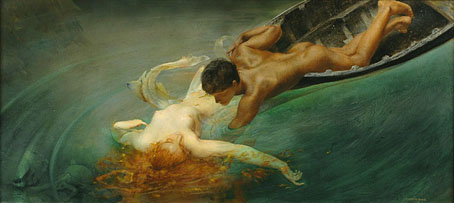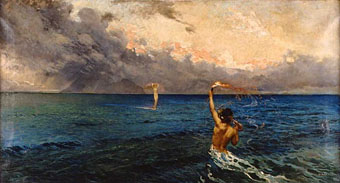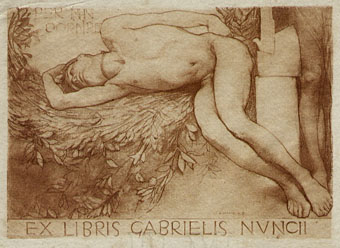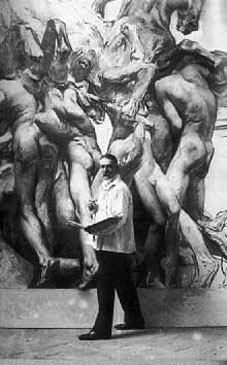
Giulio Aristide Sartorio is generally counted as one of the Italian Symbolists, along with painters such as Giovanni Segantini. He’s also one of the few notable artists of the period to have worked as a film director.
I’ve been fascinated by the curiously erotic academic style of Sartorio’s early work for years but these paintings rarely appear in books (although there have been a couple of monographs) and there’s little decent attention given to him on the web. Philippe Jullian in his essential guide to Symbolism, Dreamers of Decadence (Pall Mall Press, 1971), describes his work as being “vast paintings… full of handsome warriors who are always naked and generally dead.” Gabriele D’Annunzio, who knew heroic camp when he saw it, became a fan when the pair met in Rome in the 1880s. Sartorio illustrated D’Annunzio’s Isaotta Guttadàuro in 1886 and they continued to collaborate into the 1920s. One possible reason for Sartorio’s falling out of favour may have been later association with Mussolini’s Fascists, something else he shared with D’Annunzio.
Diana of Ephesus and the Slaves (1893–98).
Much as I’d like to point you to a large reproduction of the bizarre Diana of Ephesus and the Slaves, there doesn’t seem to be one around just now. However, you can see a few gallery pages of Sartorio’s work here if you don’t mind the copyright label spoiling everything.
Update: A reasonable copy of the Diana painting has turned up. Click the image above.
Diana of Ephesus and the Slaves (detail).
Gorgon and the Heroes (1895–99).
L’Invasione degli Unni (no date).
Siren or The Green Abyss (1900).
Pico, roi du Latium, et Circé de Thessalie (1904).
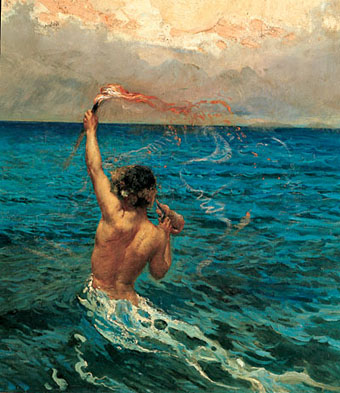
Pico, roi du Latium (detail).
Ex libris Gabrielis Nuncii “per non dormire” (1906).
Elsewhere on { feuilleton }
• The gay artists archive
Previously on { feuilleton }
• Angels 4: Fallen angels

